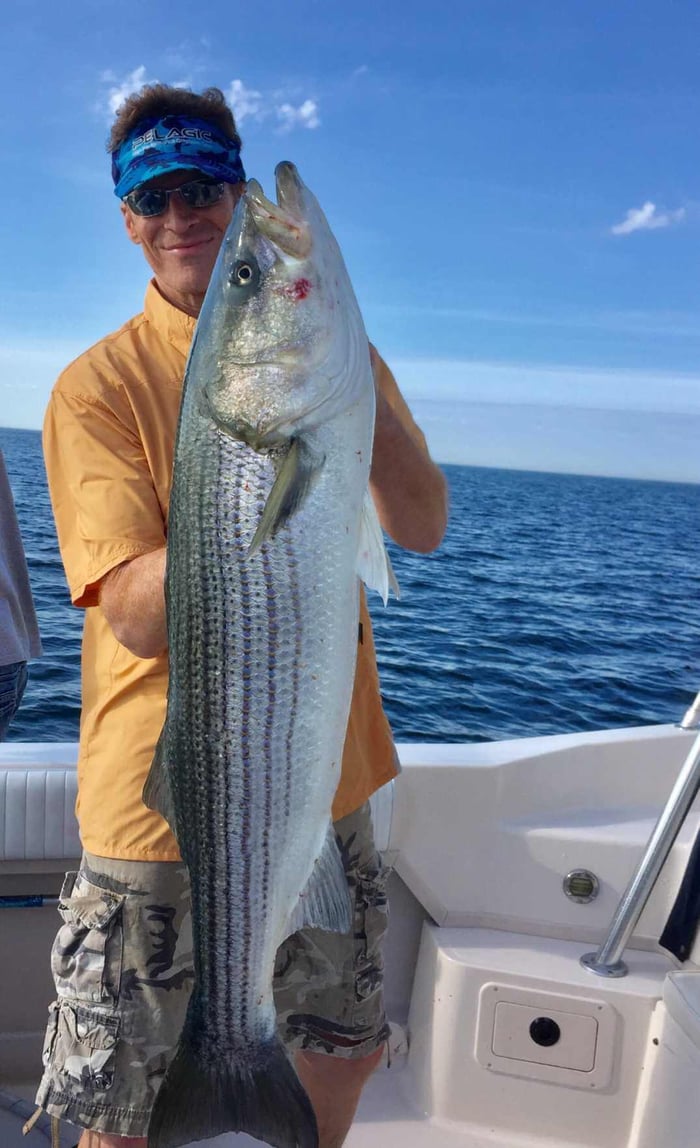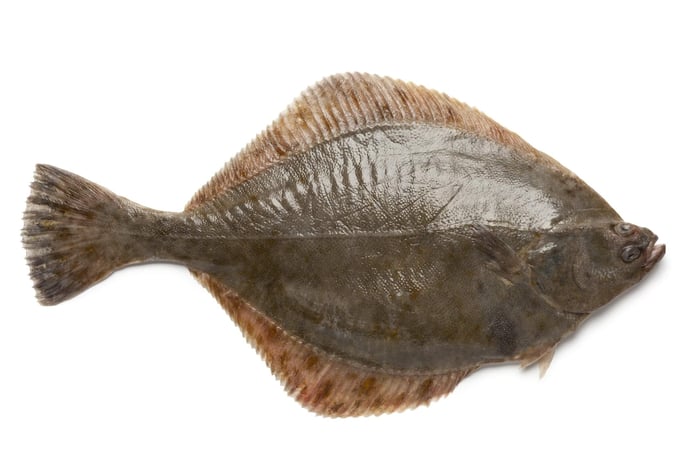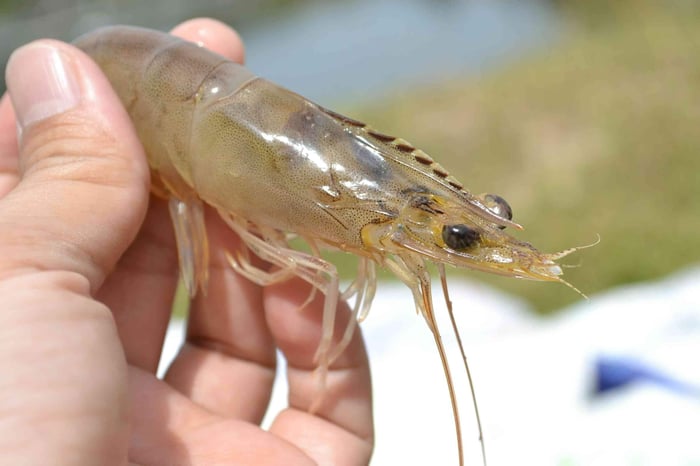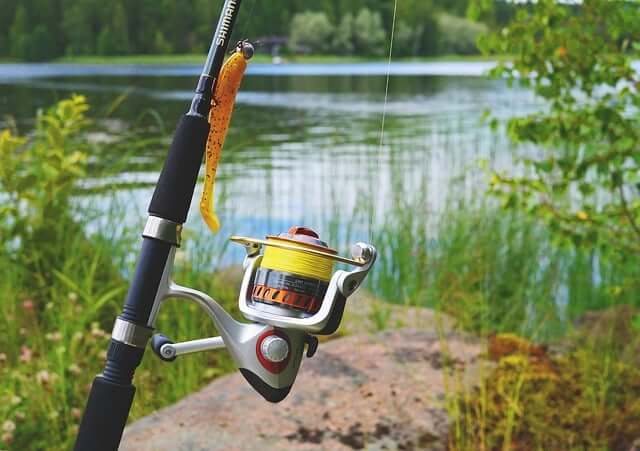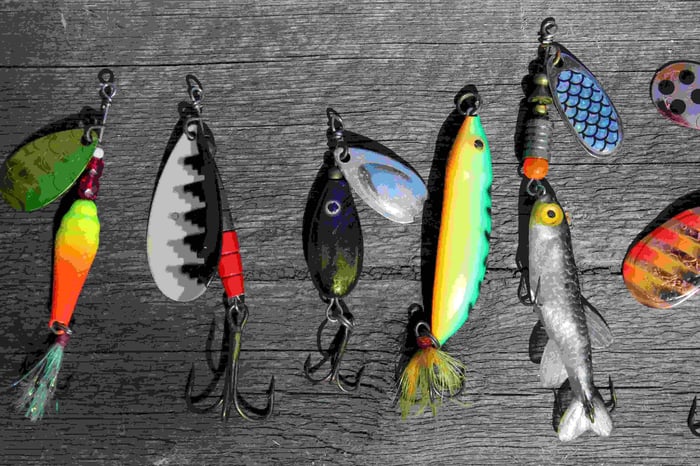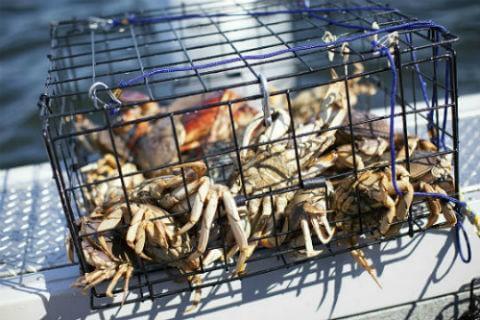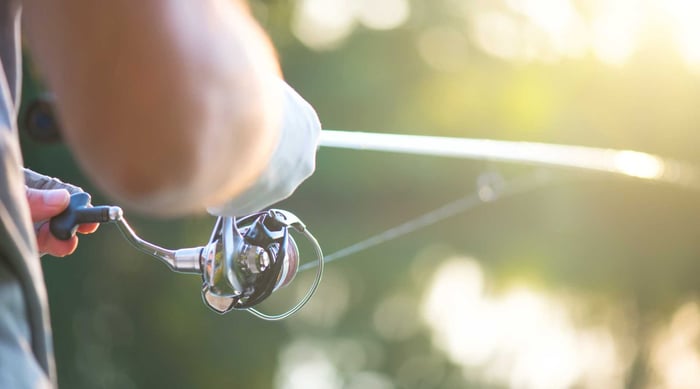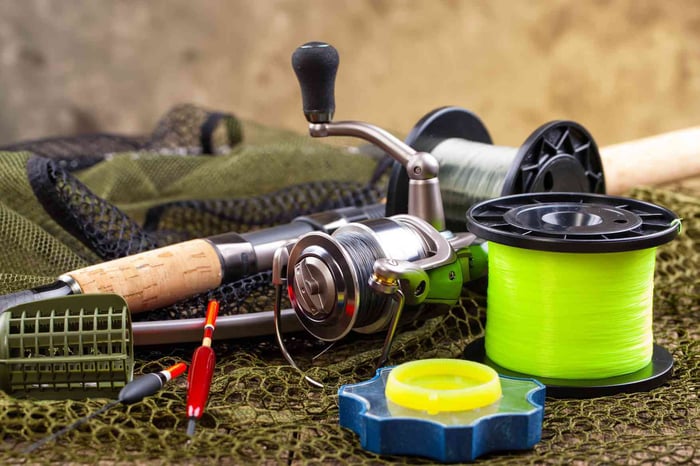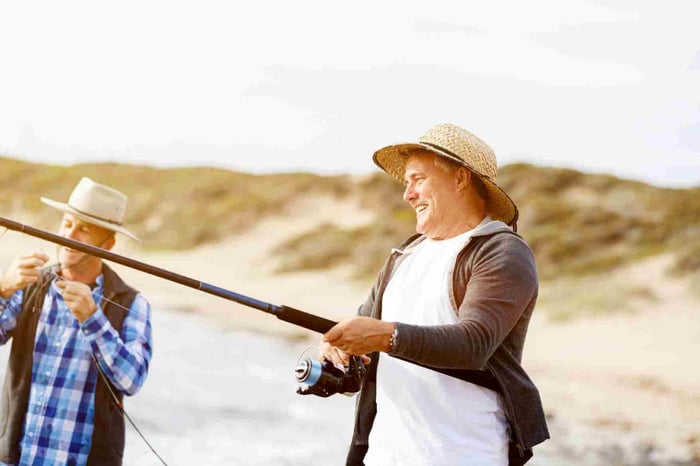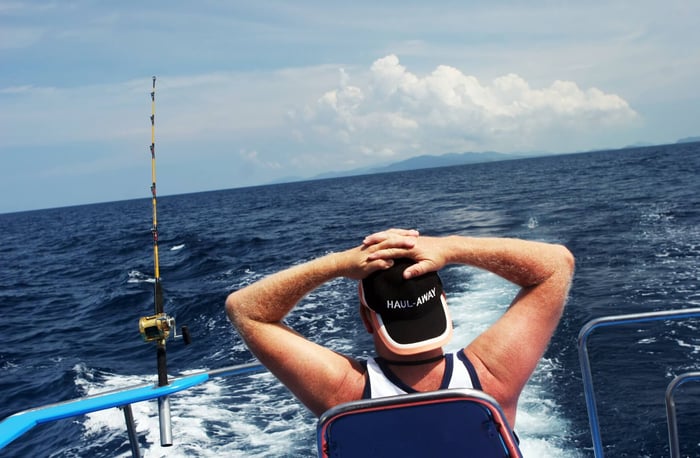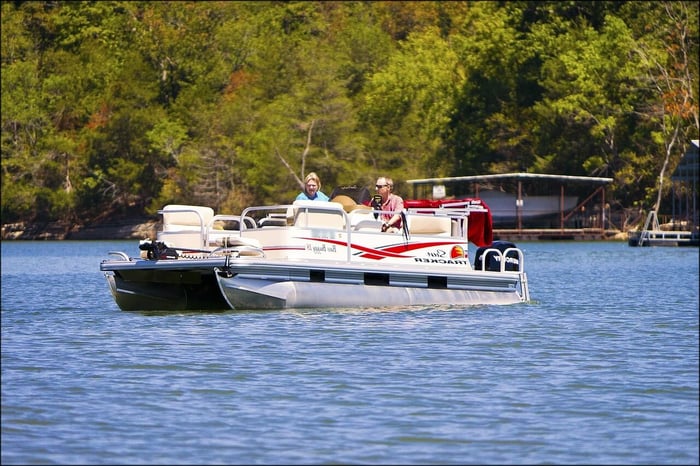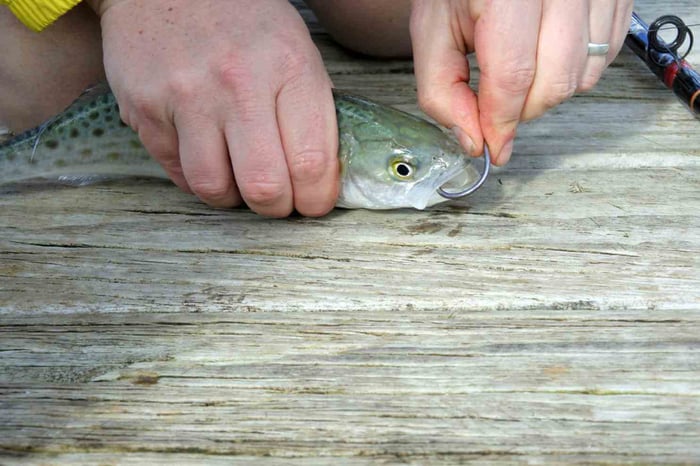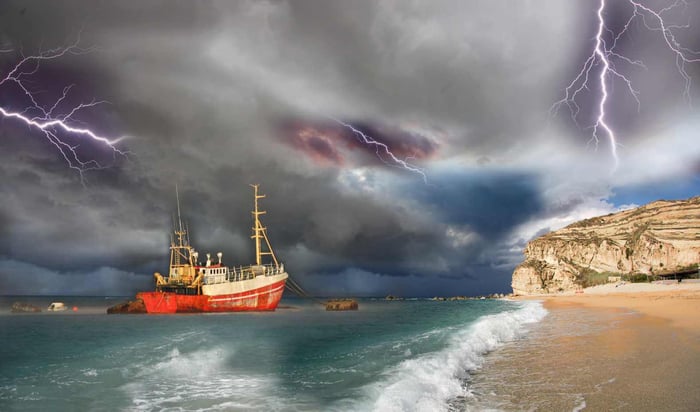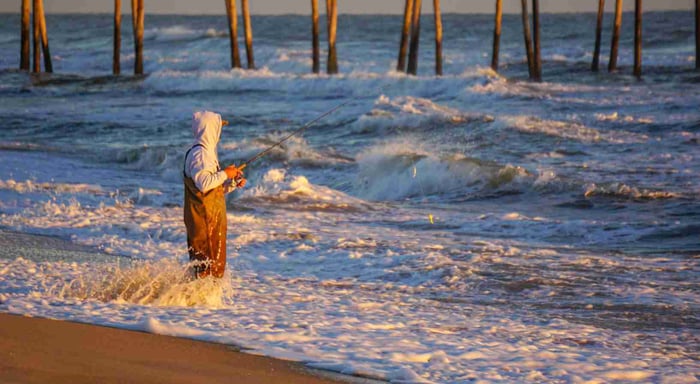Table of Contents
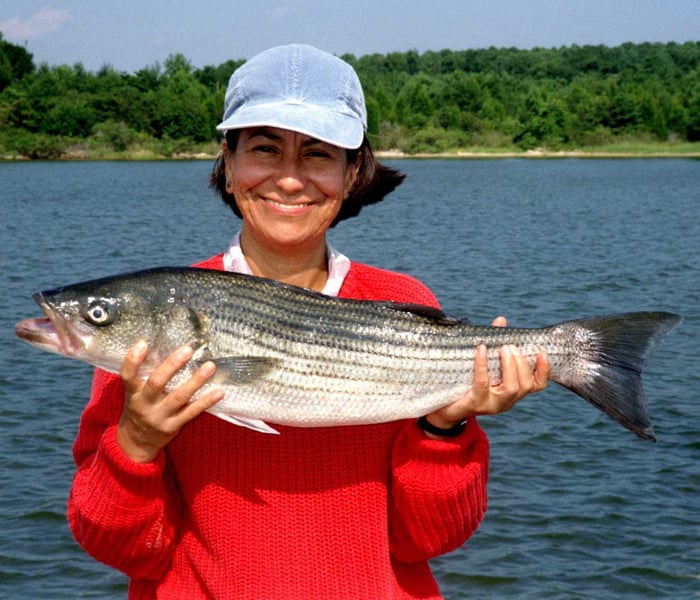
There is seriously no other feeling like the strike of a striper when it sees your bait.
The rod loads, the drag screams, and for a moment, you get that feeling of strength.
It's everything that keeps so many of us out there in the black or wading in the surf.
Yes, striped bass do that to fishermen.
They're just hard to predict. Pretty smart for a fish, too.
Not only that, but they can also come across as powerful. Hence, you can say each fish is earned.
I suppose the biggest question about striper fishing is, literally, what bait to use.
Some fishermen swear on live eels. Others will not venture outdoors without a sack of bunker chunks.
Many lean on lures because they wish to experience the strike themselves and not have the odor do it for them. The possibilities are endless.
You can ask a group of fishermen lined up against a jetty, and you will receive three answers.
And get this, none of which are wrong.
That is why selecting the appropriate bait is easy and hard.
Stripers feed on whatever is in front of them, but they can also become finicky, depending on the season, tide, or water conditions.
A May caller may not get a bite in August. What loads a cooler in the Chesapeake may not catch a fish in a New England surf. So, yes, there is really no single answer for this.
In this article, we will walk through the top baits and when to use them.
Not in theory, but in the way anglers actually fish them.
The goal is not to crown one bait as the best (I mean, that's just not possible at all), but to show the choices that consistently "catch" stripers across different waters.
Striped Bass Feeding Behavior
That is why the question of what is the best striper bait never has one solution.
Striper fisheries range from the East Coast's tidal rivers to freshwater lakes in the south and even to waters such as the Sacramento River and San Francisco Bay.
Each environment dictates how these fish eat and what they bite.
• Spring is the initial major push.
As water temperatures rise, stripers start to migrate.
Large schools enter bays and rivers in pursuit of herring, shad, and other forage species.
This is when a lot of anglers jam sandy beaches or rocky points waiting for that run of bass coming close to shore.
• Summer is different.
Hot water makes striped bass finicky.
They dine more frequently in the evening or deeper channels where cool waters contain bait.
Surf fishing may still be effective, but boat fishing or drift fishing in deep water tends to be more productive.
• Fall is the season that every striper angler hopes for.
This is when the blitzes explode.
Bunker and menhaden move in, and large stripers bash through them with abandon.
On Cape Cod, Monterey Bay, and even around Raccoon Strait, bird-watching anglers see birds diving.
That's almost their cue that the bass are there.
Stripers eat like ambush predators, but they are opportunistic. Very opportunistic.
They will destroy artificial lures that resemble injured bait.
Or perhaps they will inhale bloodworms that flow naturally with the tide.
Female striped bass tend to become the largest striped bass.
And actually, they will eat just as readily if you match what "attracts" striped bass at the time.
Whether it's open beaches, tidal rivers, or islands of riches in structure, they feed where the food is. Sometimes, it's just as simple as that.
The Case for "Live" Bait

Most anglers swear by it, and honestly, they’re not wrong. This is especially true if your goal is to land a big striper.
A live fish fighting in the current is just hard for a predator to overlook.
Whether you are fishing freshwater on Lake Texoma, jigging vertically over Lake Cumberland, or fishing tidal rivers off the Hudson River, you just need one thing to remember.
If your bait is live and healthy, it will draw striped bass.
• The eel is one of the most widely used baits for stripers.
Eels can be drifted along an open beach or on a Carolina rig for boating.
They flop relentlessly, driving the stripers wild. Honestly? Stripers just can’t resist.
Old-timers know to hook them in the lip or behind the head to get them to swim naturally.
And always, always go with a circle hook.
Trust me, it will keep the fish pinned without gut-hooking.
• Bunker, or menhaden, is another favorite.
There is nothing more heart-pounding than dropping a live bunker into a feeding school.
Even in deeper water, a fish finder or mojo rig with live bunker is deadly.
The best part? You can usually grab them at most bait shops.
• In cooler waters, herring and mackerel shine.
Herring are especially deadly during the spring run.
Mackerel? They put in work during the late fall off Cape Cod or even Monterey Bay.
Threadfin shad are another prime bait, often used in freshwater lakes like Lanier or Cumberland.
Anglers chasing stripers in the Sacramento River also rely on gizzard shad, a staple in that fishery.
The point is, stripers aren’t picky here. If it wiggles, they’ll whack it. Pretty simple, right?
• In the southern range, perch and spot are traditional live baits.
Bluegill or shad are also used successfully by freshwater anglers.
In all instances, a live baitfish is what initiates the strike.
Rigging does count.
Just employ a barrel swivel to prevent your line from twisting.
A sturdy main line paired with light tackle if the water is clear.
Additionally, it's essential to consider the bait's position in the water column at all times.
Drifting live bait in deep water requires a heavier rig.
However, remember that surf fishing over sand beaches may only require a bare hook and weight.
Live bait is a killer when stripers are finicky or sitting in certain places.
Indeed, bucktails or umbrella rigs are effective in catching fish.
But honestly, nothing beats the sight (and feel) of a striper slamming a frantic baitfish.
If you’re after the true trophies, stick with live bait.
It’s raw, it’s natural, and it flat-out works. It's been proven so many times already.
What else can you ask for, right?
Cut Bait and Dead Bait Options
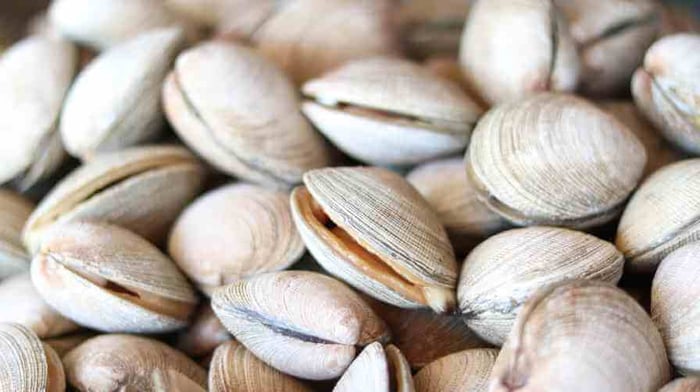
Striped bass are predators, but they also play a role in cleaning up the ecosystem.
This is why cut bait and dead bait always find a home in striper fishing.
The smell alone will attract fish even when fish are not biting hard.
It is easy, dependable, and used by many anglers who prefer to keep their tackle box simple.
Bunker Chunks
Bunker chunks are among the most widely used baits.
Stripers are counted on by East Coast surfcasters when those fish run through sandy beaches and tidal rivers.
The aroma travels quickly, and a cruising striper in the water column cannot help but be attracted.
Clams
Clams are another personal favorite, particularly up in the Northeast.
They perform well when bass fishing over open beaches or rocky points.
They are readily available from any bait shop.
Additionally, they remain effective in saltwater even during extended tides.
Squid
Squid performs well at night.
It emits this consistent "odor" that draws striped bass and other species.
A piece of squid floating in the current will still get hits.
This is particularly from female striped bass in the summer months.
It may not look alive, but stripers don’t care when their noses pick it up.
Mackerel Chunks
Chunks of mackerel are used too.
Boat fishing near Monterey Bay or San Francisco Bay often requires them.
Offshore piers and deeper holes may see them as the top choice for fishing when stripers drive small fish into position.
The advantages of cut bait are obvious.
It has a scent trail, is suitable for beginners, and catches fish with minimal effort.
The disadvantages are likewise obvious.
Cut bait is less active; therefore, it doesn't cover as much water as live bait or artificial lures.
And sometimes you’ll pick up “trash fish” like skates or dogfish.
Nevertheless, for those who prefer a simple and effective solution, it remains a top choice.
Artificial Lures That Consistently Catch Stripers
You trick the fish with action, color, and presentation.
Most anglers will tell you there is nothing quite like seeing a striper blow up a plug at the surface.
And on that note, I agree.
• Bucktail jigs are the traditional.
Simple, versatile, reliable.
They can be retrieved in deep water or shallow surf.
Couple that with a soft trailer, and they imitate shad or herring that stripers key on all season.
• Plugs are favorites, too.
Pencil poppers splatter across open beaches, darters function in current, and surface poppers attract explosive strikes at dawn.
They are among the most popular surf fishing baits when stripers drive bait to the surface.
• Soft plastics such as paddletails and swimbaits.
They also land large striped bass and small species.
They excel in freshwater lakes, such as Texoma and Lanier, or in saltwater bays, like Cape Cod and Raccoon Strait.
• Spoons and metals are consistent in the wind.
They cast long off sandy beaches, cut current, and replicate small schools of baitfish in the water column.
When stripers are keyed on large concentrations of shad, these lures are deadly.
• The umbrella rig is an old boat fishing standby.
It resembles a school of bait and deceives the largest stripers in striper fisheries such as Lake Cumberland or the Hudson River.
A mojo rig is also used for trolling in deeper water by some fishermen.
It will attract large stripers in late fall.
Extra Note: Matching the hatch is important!
Select a size and color to match what the stripers are feeding upon at that time.
Day or night is also important.
Light lures catch under sunlight, and dark shadows catch under moonlight.
To most anglers, artificial lures aren't merely about catching fish.
They're about the battle, the strike, and the thrill of deceiving a predator.
Match Your Bait to The Conditions
The best bait for striper fishing varies depending on the situation.
Water temperature, tide, season, and even wind ALL matter.
They seriously determine what striped bass are attracted to on any given outing.
Spring
In the spring, stripers migrate into tidal rivers and estuaries.
Herring, shad, and bloodworms all make good bait.
Surf fishing and drift fishing are effective methods, and most fishermen in the Hudson River or Sacramento River use these natural baits to make the connection.
Summer
During the summer months, cooler water typically contains the majority of the fish.
Night fishing with eels is lethal.
Artificial lures, such as bucktail jigs, also catch stripers when slowly worked in deeper water.
Boat fishing over the treasure islands of structure or jigging vertically in reservoirs, such as Lake Cumberland, can reward big catches.
Fall
Fall is blitz season.
Schools of bunker and peanut bunker bring big stripers to open beaches and rocky points.
Boat fishermen troll umbrella rigs or a Carolina rig, while surf fishermen use bunker chunks or plugs.
This is the time when catching fish is as much about mayhem as anything.
You know, with birds diving and stripers crashing through bait in the shallows.
Extra Note: Location Matters, Too!
Location plays a part as well.
Surf fishing on beaches is not the same as boat fishing in deep water.
Striped bass fishing around bridges and jetties requires different rigs than those used for trolling in open bays.
Tide and current are equally important. On a flood tide, stripers drive bait into shore.
On an ebbing tide, they can be holding in channels and ambushing their prey.
Honestly, factors such as wind and water clarity can significantly impact everything.
There isn't a striped bass bait that catches everywhere.
The most successful fishing happens ONLY when you have adjusted to the time of year and imitate what stripers are eating on a given day.
That's what makes the difference between seasoned anglers and others.
Let's Go By Region!
Striped bass fishing covers a broad base of waters, and there is a style to each area.
Forage in the local area dictates what gear anglers employ.
The local bait shop down the road can also advise you on what works best in that location. Most owners are helpful and friendly. So, don't be afraid to ask.
Northeast Coast
Along the Northeast coast, clams are a mainstay.
Striper fishermen along Cape Cod and open New Jersey beaches frequently dig into clam bait on spring tides.
It is both tradition and technique, and it still draws stripers when the bite slows down.
Chesapeake Bay
Head south toward the Chesapeake Bay and bait fishing alters.
Spot and croaker are excellent live bait.
Drift fish with them by boat anglers near channel edges.
And the haul can be huge striped bass.
The combination of fresh water and salt water in that bay presents many opportunities for anglers.
The Mullet Runs
Down the coast a bit, there are mullet runs that bring stripers into estuaries and inlets.
Fishermen cast nets full of bait and then rig up to match the tide.
Surf-mullet movement lures striped bass and other predators within feeding range of the shore.
Freshwater Lakes
In freshwater lakes such as Texoma and Lanier, threadfin shad and gizzard shad are the best.
The anglers rig vertical jigging rigs or downlines with live shad.
And true enough, it yields some of the biggest striped bass in those systems.
Lake Cumberland also has a solid reputation, and shad are still the favorite there, too.
West Coast
Out on the West Coast, San Francisco Bay and Monterey Bay have their own quirks.
Anchovies and sardines are good baits, particularly near Raccoon Strait or Treasure Islands, where large stripers feed in the current.
Stripers in local fisheries tend to concentrate on what is available locally in season.
And seriously, it needs familiarity with the water as much as familiarity with the fish.
Final Thoughts
Striped bass fishing is never the same two days in a row.
The key is to stay open and flexible.
One day, live bait will rule it all.
Another day, cut bait or man-made baits are what attract striped bass.
What kills in the Hudson River will not kill in San Francisco Bay, and what devastates in Lake Texoma will be a bust in Cape Cod.
That is what brings anglers after them year after year.
There isn't any striped bass lure that catches every time.
The real secret is learning your water, doing what the fish are feeding on, and spending time.
Seasoned anglers all say the same thing. Trophy stripers are a patient's best friend.
Thus, the best striper fishing bait is simple yet versatile.
The greatest bait is the one that will elicit a strike in the location and at the time you are on the water.
Fill your tackle box, try things differently, and allow the stripers to teach you what they like.
Because you never know, that next cast could be the one that hooks the striper you’ll never forget.
